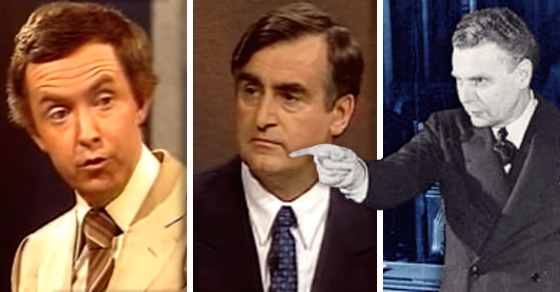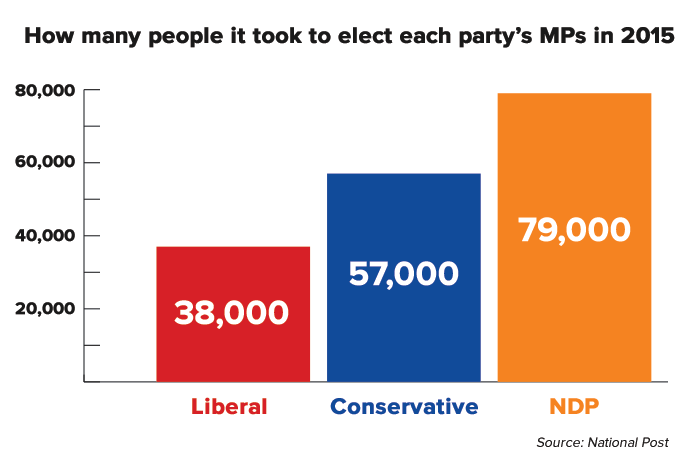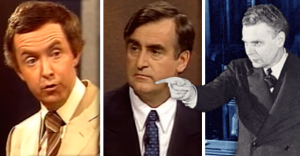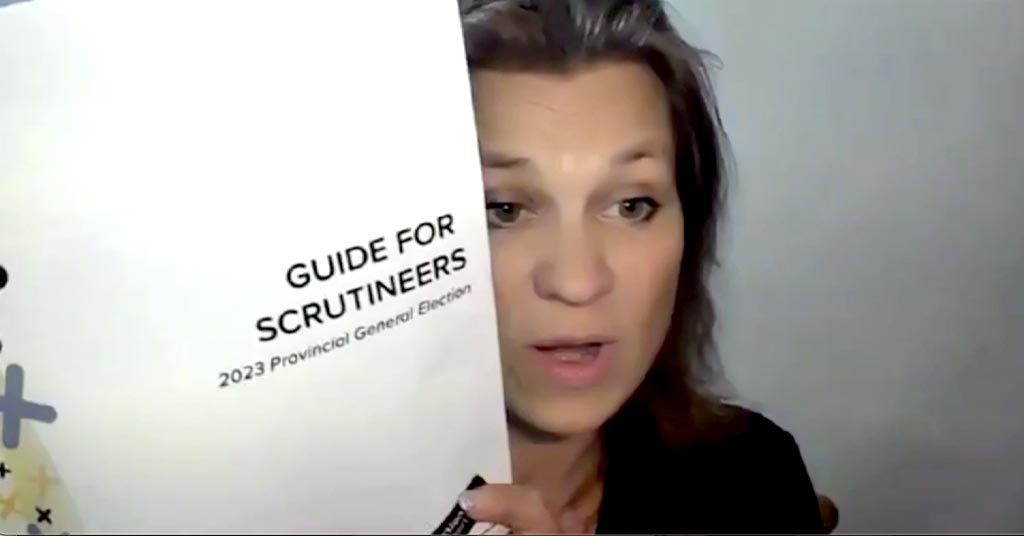
7 strangest election results in history produced by Canada’s broken voting system
Here's a look at the strangest election results in Canadian history produced by our First-Past-the-Post voting system
Do Canadian elections really produce the governments Canadians want?
Looking back at Canada’s electoral history under the First-Past-the-Post (FPTP) voting system, it makes you wonder if that’s the best possible system for a modern, multi-party democracy?
There have been 28 federal elections in Canada since 1921, the first year (other than 1867) when more than two parties participated in a federal election.
In only three elections has a party formed government with more than 50% support from voters, even though the party that wins a majority of the seats in the House of Commons wins 100% of the power.
And with party support being distributed differently across the country, votes in some locations carry less weight than others. As Andrew Coyne notes in a recent column, here’s how many people it took to elect MPs from each party during the last election:

Not included in the chart above (because the system is so distorted it broke our chart) are the 603,000 people it took to elect just one Green MP.
And that’s not a one-time aberration – here’s a look at the strangest election results FPTP has produced in Canadian history:
1935 federal election
During the last election before the outbreak of the Second World War, five parties participated in the 1935 federal election.
The Liberals won a 173-seat majority with 44.7% of the vote, while the four opposition parties split the remaining 72 seats in the 245-seat Parliament.
The PCs were reduced to 39 seats, despite getting 30% of the vote. The newly formed Social Credit Party won 17 seats with only 4% of the vote. And the Co-operative Commonwealth Federation got 7 seats with 9.3% of the vote.
The short-lived Reconstruction Party pulled in 400,000 votes (nearly 9% of the total vote) and was awarded a single seat.
1957 federal election
Newly minted Progressive Conservative leader John Diefenbaker faced off against Liberal Prime Minister Louis St. Laurent in the 1957 federal election.
The Liberals received 40.5% of the vote, compared to the PCs 38.5%, but won fewer seats. Diefenbaker became Prime Minister in a minority government.
1974 New Brunswick provincial election
In a province where only two parties were competitive, you’d think there’d be a clear cut winner.
Well, the 1974 New Brunswick election resulted in Richard Hatfield’s PCs winning a majority government even though they received fewer votes than the Liberals.
1979 federal election
Joe who? Exactly.
Even though Pierre Trudeau’s Liberals received 40.1% of the votes in the 1979 federal election, Joe Clark’s PCs, who took in 35.9% of the vote, formed a minority government with 136 seats to the Liberals’ 114.
1996 and 2001 British Columbia provincial elections
Meanwhile in B.C., it seems like FPTP is annoying people on both sides of the spectrum
The provincial NDP formed a majority government after the 1996 B.C. election, despite winning fewer votes than the B.C. Liberals. But five years later, the NDP was reduced to 2 seats despite getting 21.6% of the vote.
1993 federal election
Maybe the best case study showing what’s wrong with FPTP, the 1993 federal election saw Jean Chretien’s Liberals win a majority government with 41% of the vote and 177 seats.
Only problem? The governing PCs lost party status and was reduced to 2 seats with 16% of the vote while the separatist Bloc Quebecois became the Oifficial Opposition with only 13.5% of the vote (and 54 seats), eclipsing Preston Manning’s Reform Party, which received 18.7% of the vote and 52 seats.
So is everyone’s voice given equal weight under our First-Past-the-Post voting system?
That’s a question worth thinking about as Canada’s debate on electoral reform continues.
Photo: LAC, used under Creative Commons license. Youtube.
Our journalism is powered by readers like you.
We’re an award-winning non-profit news organization that covers topics like social and economic inequality, big business and labour, and right-wing extremism.
Help us build so we can bring to light stories that don’t get the attention they deserve from Canada’s big corporate media outlets.
Donate




